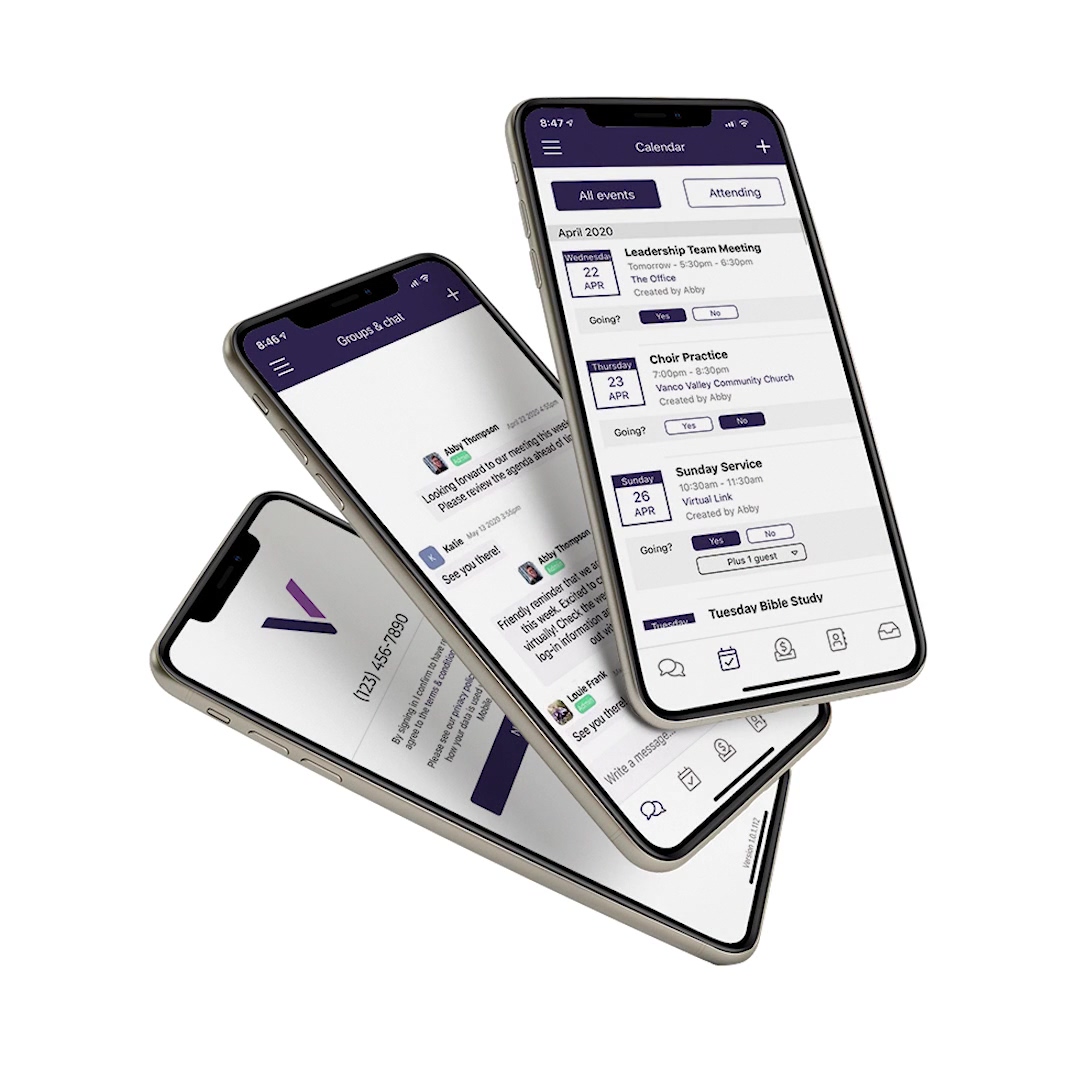
People don’t leave churches because they stop believing. They leave because they feel disconnected. A strong church communication strategy changes that. It keeps members engaged, ensures church website communication works and establishes strong church announcement methods.
It also builds trust through church internal communication, digital storytelling in ministry and faith community outreach. If you’re ready to stop losing members and start growing a thriving congregation, this is where you start.
Table of contents
- What Is a Church Communication Strategy and Why Is It Important?
- How Can Churches Develop an Effective Communication Strategy?
- What Are the Most Effective Communication Channels for Churches?
- Using Digital Platforms: Church Website and Social Media
- How Can Churches Improve Their Message Delivery to Members and Visitors?
- What Role Do Church Leaders Play in Communication Strategy?
- How Can Churches Measure the Effectiveness of Their Communication Strategy?
- What Are Common Challenges in Church Communication and How to Overcome Them?
- Enhancing Community Engagement and Outreach
- Conclusion and Future Trends in Church Communication
- 20 Traditional and Online Church Marketing Strategies for Churches Looking to Grow
Too Busy to Read? Listen to the Key Takeaways
Get the key takeaways by clicking to listen the podcast summary now!
What Is a Church Communication Strategy and Why Is It Important?

Defining Church Communication Strategy
A church communication strategy isn’t just about sending emails or posting announcements — it’s about ensuring the right message reaches the right people at the right time.
Church internal communication keeps staff and members informed and engaged, while church outreach communications invite newcomers and the broader community into your mission.
Striking a balance between digital ministry marketing (think social media and email) and traditional methods (yes, even the church bulletin) ensures your message doesn’t get lost in the noise.
The Importance of Effective Church Communication
A church with clear, intentional communication doesn’t just function more smoothly; it flourishes. Effective congregational engagement tactics create a culture where people feel informed, valued and inspired to participate in your mission.
Strong church branding strategy shapes how the public perceives you because your church is more than just a building; it’s a living, breathing community and you can read more about that here. We also have a free course we built to help guide churches through each step of the process. Check it out if you want a deeper dive.
Beyond that, trust is built when your messaging is consistent and transparent.
Whether you’re using faith-based communications for Sunday sermons or church digital outreach to connect with members midweek, a thoughtful strategy keeps everyone on the same page.
Key Components of a Church Communication Plan
A strong church communication plan starts with aligning your messaging with your vision, mission and values. After all, if your church doesn’t know its purpose, how will anyone else? Check out tips for creating mission statements here and vision statements here. Beyond that, content marketing for ministries helps share your church’s story in a way that resonates.
Using the right tools, like a content management system (CMS), church website or email newsletter service, makes communication seamless. Additionally, because life is unpredictable, having a crisis communication plan ensures your church is ready to provide clarity and calm in times of uncertainty.
How Can Churches Develop an Effective Communication Strategy?
Identifying Your Church's Communication Needs
Before you can fix a problem, you have to find it. Are your Sunday bulletins collecting dust in the pews? Are important announcements vanishing into the digital void? Assessing your church communication channels helps you understand what’s working and what’s not.
Next, look hard at your digital ministry platforms and social media channels. Are people engaging with your posts or getting lost in the algorithm? Different audiences prefer different methods of communication.
While some members rely on church email communication, others expect updates via community engagement apps or video content. Understanding these preferences helps you craft messages that reach people instead of disappearing into the abyss of unread notifications.
Creating a Church Communications Strategy Template
A strong church communication strategy doesn’t happen by accident; it’s planned. Start by setting clear goals. Do you want to increase attendance at events, or maybe keep members informed about ministries? Whatever the priority, a faith-based communications plan keeps everything on track.
A content calendar is your best friend. It helps you schedule announcements, sermons and updates in a way that prevents last-minute scrambling. (No one wants to write an emergency Sunday bulletin at 11:59 p.m. on Saturday.) For optimizing visibility, search engine optimization (SEO) and analytics tools can track engagement and help fine-tune your messaging. For more information, check out this article on SEO for churches.
Using a content management system (CMS) can also streamline how you schedule and distribute updates across platforms. Whether through social media, emails or the church bulletin/newsletter, consistency builds trust and keeps people from asking, “Wait, was there a meeting today?”
Integrating Crisis Communication and Reputation Management
Nobody wants to think about worst-case scenarios, but a crisis communication plan is crucial. In an emergency, people need clear, calm and reliable information, not a frantic game of telephone.
This moment is where your church media relations team steps in. They ensure your church’s response is timely, transparent and most importantly, accurate. Whether handling press inquiries or coordinating messaging across digital ministry platforms, having a prepared team ensures that the correct information reaches the right people.
Beyond crisis management, reputation matters. Ongoing church public engagement helps foster trust and transparency, preventing minor concerns from becoming big problems. Open communication builds a stronger faith community and when people feel heard, they’re more likely to listen.
Empowering Members as Your Church's Best Communicators
Your church's growth shouldn't rest on the pastor alone. Research shows 73% of church members invite two or fewer people yearly, and 33% never invite anyone. They want to help but feel uncomfortable or don't know how.
Why Member Communication Matters
Members have authentic relationships and natural conversations that marketing can't replicate. When equipped with simple tools and training, your congregation becomes a network of personal evangelists reaching people you never could alone.
Quick Ways to Activate Member Outreach
• Monthly training during services - Show why inviting matters, provide invitation cards or social media graphics and practice real conversations together.
• Small group connections - Encourage members to invite newcomers from recovery groups, study groups or community events.
• Social media sharing - Individual posts get more reach than church pages. Ask members to share their favorite sermon with a simple invitation.
• Service-based invitations - Members help neighbors with yard work or repairs, then leave an invitation card.
The video above shows seven proven tactics to transform passive members into active inviters. When you combine clear tools with member empowerment, your church creates authentic connections no single pastor could achieve alone.
What Are the Most Effective Communication Channels for Churches?
Balancing Internal and External Communication
Your church's internal communication should be like a well-rehearsed choir with everyone in sync, hitting the right notes. If your staff and volunteers don’t have clear information, how can they help the congregation stay informed?
Make internal updates easy to access and don’t rely on word of mouth. Use church bulletins, staff meetings and private messaging tools to ensure leaders and volunteers are always in the loop.
Align messaging across all channels. Your church’s social media post shouldn’t be your staff's first place for hearing about an upcoming event. Keep everyone on the same page so that when people ask questions, they get consistent answers.
Using Digital Platforms: Church Website and Social Media
Your church website communication should be a living, breathing extension of your ministry — not a digital relic from 2015. If people can’t find service times or a way to donate within a few clicks, they might not stick around.
Keep your site updated. An outdated homepage with last year’s Christmas service details doesn’t inspire confidence. Regularly refresh content to keep it relevant.
You should also use SEO and analytics tools. A great website is only effective if people can find it. Optimizing your site for search engines helps new visitors discover your church when searching for spiritual resources.
When using social media, make social media work for you. Each platform serves a different purpose in church social media management, so use them accordingly:
- Facebook: Ideal for community discussions, event updates and live streaming.
- Instagram: Perfect for visual storytelling, behind-the-scenes glimpses and short inspirational messages.
- YouTube: Your go-to for video ministry production, including sermon recordings, worship sessions and Q&A videos.
We offer a complete kit with hundreds of templates, a free AI tool and more to simplify your church communication efforts.
Use innovative tools to stay connected. Community engagement apps make it easier to manage small groups, coordinate volunteers and even facilitate private chats.
Our church giving and engagement app offers an all-in-one solution if you want a seamless way to handle this, or check out this list of the most popular engagement and giving apps.

Newsletters
If you think newsletters are outdated, think again. A well-crafted email newsletter service keeps your congregation engaged between Sundays, ensuring they never miss an important update.
Make it visually appealing because no one wants to read a long text block. Use images, short sections and clear calls to action.
Mix up the content by including video snippets, testimonials and event highlights. If you need help, watch this video on how to generate church newsletter content quickly.
Use our free newsletter guide
Not sure where to start? We created a church bulletin/newsletter guide to walk you through the process.
Announcements
People will mentally check out if your announcements sound like a grocery list. The key to effective church announcement methods is keeping them concise and engaging.
Keep spoken announcements under two minutes. If they’re any longer, people mentally check out and won’t hear a word you’re saying.
Use multiple channels, knowing that some members prefer hearing announcements in person, while others rely on texts, emails or social media.
Check out our announcement guide
We put together a resource to help you craft and deliver announcements that stick.
Events
People may forget a sermon, but they’ll remember a great event. Whether it’s a church picnic, worship night or fundraiser, in-person gatherings build a community like nothing else.
Have a clear goal for each gathering. Every event should serve a purpose, whether it’s outreach, fundraising or discipleship.
You can use event management software to help in this pursuit. The right tools make tracking RSVPs, schedules and even fundraising efforts easy. Plus, integrating it with church-giving software ensures you’re covered for donation-based events. Vanco Events does both, so check it out!
Get our free event planning guide
This comprehensive guide covers everything from promotion to logistics to follow-up.
Podcasting
A well-produced podcast can take your ministry beyond the walls of your church. More and more churches use podcasting platforms to share sermons, faith discussions and interviews with community leaders.
Why podcasts work: Unlike social media posts that disappear in a day, podcasts provide evergreen content that listeners can revisit anytime.
How to start one: If you’re considering launching a podcast but aren’t sure where to begin, check out our church podcast guide here.
How Can Churches Improve Their Message Delivery to Members and Visitors?
Crafting Clear and Engaging Messages
Ever notice how people can recite their favorite movie lines but somehow miss an important church announcement? That’s not just selective hearing; it’s a messaging issue. A strong church messaging strategy ensures your words aren’t lost in the noise.
Keep your language warm, accessible and free of “church speak” that might confuse newcomers. If your message wouldn’t make sense to someone outside your congregation, it’s time for a rewrite.
Tailoring Communication to Different Audience Segments
Not everyone hears the same message the same way. First-time visitors want to feel welcomed and not overwhelmed with committee updates, while long-time members might seek deeper engagement.
Using SEO and analytics tools helps you understand who’s interacting with your content and what they care about. That means you’re not just throwing announcements into the void; you’re speaking directly to the people who need to hear them.
Incorporating Multimedia in Church Communications
People are wired to remember what they see far more than what they hear. That’s why a video ministry production can make a sermon linger in hearts long after the final amen and digital storytelling in ministry can turn a simple testimony into something deeply moving, far more powerful than a wall of text in the bulletin that most people skim at best.
Even a well-placed infographic (we see you, Canva!) can take a dense topic and make it easy to grasp in seconds.
If you’re feeling adventurous, AI tools like IMAGEN, Bing Image Creator and Deep AI can generate custom visuals that fit your message perfectly because sometimes, a picture is worth a thousand well-intentioned but overlooked church announcements.
What Role Do Church Leaders Play in Communication Strategy?
Leadership's Involvement in Developing the Ministry Communication Plan
Have you ever tried shouting into the wind? Without a clear church messaging strategy, that’s what church communication can feel like, with messages scattered and engagement lost. That’s where you come in. As a leader, your vision shapes how your congregation stays informed and connected.
The church communication director and church media relations team may handle the logistics, but they need your guidance to ensure every announcement, sermon and update aligns with your mission.
Are you casting a vision that your team can run with? From faith-based communications to church outreach communications, your leadership differentiates between a message that resonates and one that gets lost in the noise.
Training Church Staff on Effective Communication Practices
You wouldn’t expect your worship team to lead music without rehearsal, so why should communication be any different? Your staff and volunteers need clear guidance on how to share information effectively. Training sessions on church internal communication can turn a scattered approach into a well-orchestrated effort.
Whether improving church communication channels or mastering digital ministry platforms, equipping your team ensures that members hear what they need to without missing the essential details.
Empowering Volunteer and Communication Teams
Without volunteers, half of church operations might grind to a halt. So, are your communication teams set up for success in empowering those volunteer teams or are they just hoping for divine intervention? Giving volunteers clear roles ensures they know exactly how to support your church announcement methods and church digital outreach.
While old-fashioned bulletin boards have their charm, using community engagement apps can streamline communication so no one misses a beat. When you create a system where messages flow smoothly, your team and your congregation will thank you.
How Can Churches Measure the Effectiveness of Their Communication Strategy?
Setting Communication Goals and Metrics
If you don’t define success, how will you recognize it? Set clear key performance indicators (KPIs) that go beyond vanity metrics.
Of course, a high follower count on your church's social media platform looks nice, but are those people engaging? Is your email newsletter service leading to event sign-ups? Benchmark your digital ministry marketing efforts by tracking what moves people to action.
Gathering Feedback from Congregation and Visitors
Spreadsheets tell part of the story, but real insight comes from people. Ask them directly. Use surveys, focus groups or even casual conversations in the fellowship hall to gauge how well your church outreach communications resonate.
Don’t just go by gut feeling. Lean on your SEO and analytics tools and content management system (CMS) to see which messages land and which ones fall flat.
Adapting the Strategy Based on Results
No one gets communication perfect the first time. Regularly review your church announcement methods and adjust them based on accurate data. Are people missing key updates? Maybe your church website communication needs to be more precise.
Are videos getting more engagement than text posts? Lean into digital storytelling in ministry to capture attention. The goal isn’t just to send messages; it’s to make sure they’re heard, understood and acted upon.
What Are Common Challenges in Church Communication and How to Overcome Them?
Addressing Communication Gaps Within the Church
Have you ever sent an important message to find out half the team never got it? Or announced an event and heard, “I had no idea that was happening!”? Communication gaps in a church aren’t just inconvenient; they can weaken engagement and create unnecessary frustration.
A strong ministry communication plan ensures that staff, volunteers and congregation members stay informed. Without it, key messages can easily get lost in the mix.
Balancing Traditional and Modern Communication Methods
Church bulletins. Social media. Pulpit announcements. Emails. Text alerts. The options are endless, but so is the resistance to change. Some members still want that paper bulletin in their hands, while others won’t read anything that’s not on their phones.
You can navigate this generational divide in church outreach communications by striking the right balance between honoring tradition and embracing tools that expand your reach.
Maintaining Consistent Messaging Across All Channels
If your church's social media management team posts one message, the bulletin says another and the pulpit announcement tells a third version, people wonder: Which one is correct?
Inconsistent messaging leads to confusion and confusion leads to low participation. A unified voice across emails, social media and Sunday announcements helps eliminate the “I thought it was next weekend” moments.
Overcoming Technological and Resource Limitations
Budgets are tight. Staff is stretched thin and not everyone on the team is a tech expert. Investing in digital ministry marketing can feel overwhelming when resources are limited. All of these realities are ones with which your church has to contend in its communication efforts.
Regardless, with the right tools and a little creativity, you don’t need a Hollywood production budget to create engaging content. Volunteers, community partnerships and cost-effective platforms can help fill the gaps, ensuring your message reaches people without breaking the bank.
Enhancing Community Engagement and Outreach
Developing a Church Outreach Program
You're missing half the conversation if your faith community outreach only happens within church walls. The real work happens when you step into your neighborhood, connect with local events and serve purposefully. People are far more likely to engage when they see your church investing in them first.
That’s why aligning your church outreach communications with community initiatives isn’t just practical — it’s essential. Need inspiration? Here are some great outreach ideas to get started.
Using Social Networking and Digital Ministry Platforms
Your church’s online presence is like its digital front door, so what does yours say? If your last post was a VBS flyer from 2019, it might be time for a refresh.
Consistent, engaging content on social media channels can turn passive scrollers into active participants. Your message reaches well beyond Sunday morning with the proper digital ministry marketing. Not sure where to start? We’ve got free resources to help.
Conclusion and Future Trends in Church Communication
Emerging Trends in Digital Ministry and Communication
Church communication is no longer just about Sunday bulletins and pulpit announcements. It’s an ongoing, interactive experience built around engagement and storytelling. If you’re still relying on static emails or a rarely updated church website, it’s time for a reality check.
Churches with mobile apps see a 21-percent jump in engagement among adult members.
The message is clear: people expect to connect with their faith communities as with everything else — through their phones, social feeds and on-demand content.
Planning for the Future of Church Communication Strategy
There’s no “set it and forget it” in church outreach communications — what worked last year might feel outdated tomorrow, but that doesn’t mean mindlessly chasing trends.
Future-proofing your strategy is about building a faith-based communications framework that can flex with new technology while staying true to your mission.
20 Traditional and Online Church Marketing Strategies for Churches Looking to Grow
"I Found My Spiritual Home Because of These Strategies."
That's what newcomers will say after you implement the 20 church marketing tactics outlined in our latest guide. From leveraging social media to optimizing your online presence, these strategies are crafted from real congregational feedback. Discover how to make your church the beacon of hope in the years to come.














